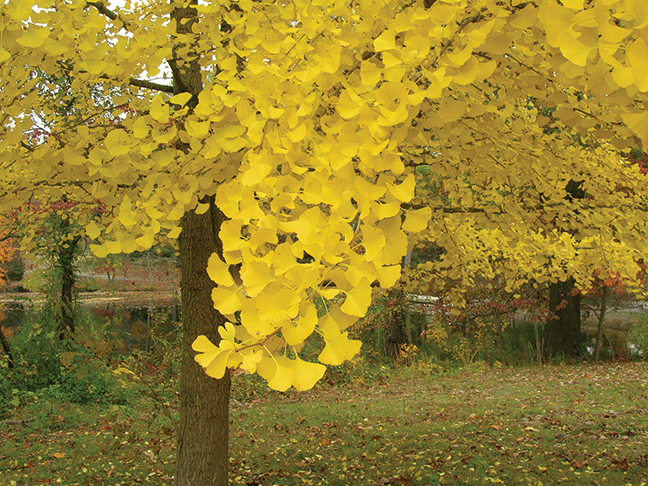Ginkgo biloba brandishes deep roots

Ginkgo biloba, also known as the “Maidenhair tree,” is a tall pyramidal tree that can grow 40-70 feet tall with fan-shaped emerald green leaves that turn to butter yellow gold in the fall.
They are truly the dinosaurs of the plant world, having lived on the earth since more than 150 million years ago.
They are considered a deciduous conifer, which means that the tree loses its leaves in the fall and is in the same family as cedars, cypress, firs and spruces, which are all evergreens.
The leaves of the Maidenhair tree have leaf veins like no other tree, they are almost parallel but follow the fan shape of the leaf.
The trees are either male or female, and although the owers are insignificant, the fruit of the Ginkgo is very messy and smells extremely foul while up in the tree and worse when it falls to the ground and splits open, which is why most Ginkgo Biloba that are sold are males.
Maidenhair trees thrive in most soils that are found on the Eastern Shore, and love to grow in full sun.
The trees have an interesting silhouette, tall and slender, turning more graceful as they age, and deer have never found the trees tempting to nibble on.
(Editor’s Note: Ginny Rosenkranz is a commercial horticulture specialist with the University of Maryland Extension.)



